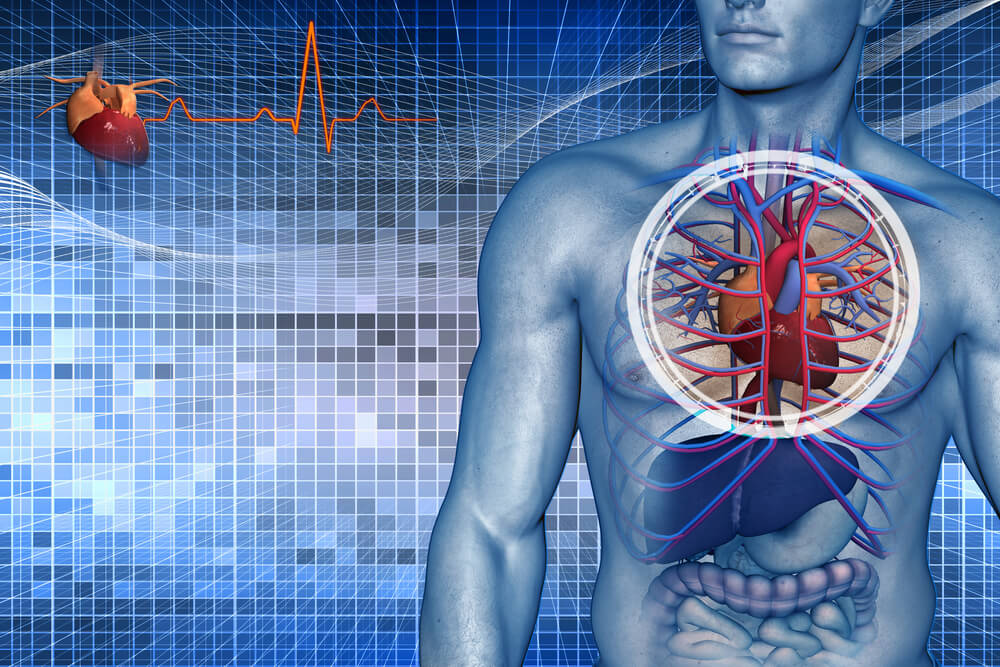Just about every individual is at risk for vascular disease with close to one out of every two people suffering from some form of vascular disease during their lifetime. And the future of vascular disease is even more bleak. As obesity rates rise and Type II diabetes is diagnosed in more and more Americans, vascular disease is expected to kill more than two million people in the United States each year. Vascular disease, an abnormal condition of the blood vessels, can cause severe disability and even lead to death. But what vascular disease symptoms and signs can you look for to prevent more serious problems? By taking early, preventative action, you can overcome the statistics and keep your cardiovascular system as healthy as possible.
RELATED: Read More About the Different Types of Heart Disease
Here is a list of vascular disease signs and symptoms to be aware of and what you can do if you notice the symptoms of vascular disease in your life or the life of those close to you.
Signs and Symptoms of Peripheral Artery Disease
For many people, signs and symptoms of peripheral artery disease don’t show until it’s a little too late. Because signs and symptoms aren’t always present, it’s important consult have your doctor check for problems if you’re 70 or older, 50 or older with a history of heart disease or smoking or are 50 or younger and have unhealthy cholesterol, high blood pressure, are overweight, lack physical activity or have a poor diet.
If signs do show, they typically show in the following ways:
- Skin discoloration
- Decreased or absent pulses
- Pain (during exercise) which worsens as disease worsens
- Rest pain (pain that occurs when lying down)
- Tissue loss (ulceration and/or gangrene)
- Sores or wounds on the toes, feet or legs that heal slowly or not at all.
- Poor nail growth on the toes
Signs and Symptoms of Venous Disease
While venous disease typically doesn’t pose a serious health threat, the condition can lead to disability and chronic pain. Look for the following symptoms and if you notice any, be sure to discuss the symptoms with your doctor.
- Sudden pain/swelling of one leg
- Pain and swelling of extremity(s)
- Unhealing ulcer(s)
- Large, protruding veins
- Tight feeling in calves
- Itchy painful legs
Signs and Symptoms of Cerebrovascular Disease
Cerebrovascular disease can be a serious sign of problems with your veins and blood flow. If any of the following symptoms occur, be sure to get checked immediately.
- Temporary cerebrovascular event or transient ischaemic attack (TIA)
- Stroke
- Vision Loss
- Speech Loss
- Weakness, numbness or paralysis
- Abnormal noise in artery of neck heard by doctor through stethoscope
Your vascular system is the highway within your body and without taking care of that highway; blood carrying oxygen and vital nutrients can’t reach where it needs to go.
Vascular disease can be a sign of more significant cardiovascular problems but in most cases vascular disease can be treated and prevented.
How to Treat and Prevent Vascular Disease
Vascular is one problem that can strike suddenly without a lot of warning and in most cases a few lifestyle changes can help you avoid the disease altogether.
RELATED: Read More About Improving the Health of Your Arteries
To treat or prevent vascular disease, be sure you:
- Don’t smoke or use tobacco products
- Eat a healthy diet balanced with plenty of fruits and vegetables
- Exercise regularly
- Keep your blood pressure in a healthy range
- Control your blood sugar levels if you’re diabetic
- Have your health checked regularly
There’s never going to be a better time to begin taking your cardiovascular health seriously. If you’ve noticed any of the above symptoms, be sure you get your health checked regularly.
Resources:
http://vascularcures.org/
http://www.universityhealthsystem.com/signs-and-symptoms-of-vascular-disease/#sthash.niI1owHl.dpuf
https://www.nhlbi.nih.gov/health/health-topics/topics/pad/signs
https://www.floridahospital.com/cerebrovascular-disease/symptoms-and-signs

